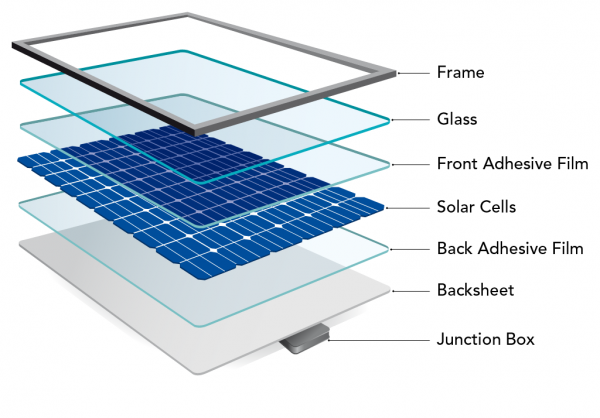Solar energy is one of the most promising sources of electricity owing to a number of inherent factors. Unlike conventional sources of energy like fossil fuels, solar radiation is abundantly received in most regions of the world. Electricity generation by solar requires little to no inputs of raw material and perfectly fits the bill for clean energy. But what is the science behind tapping solar energy? How exactly do solar panels produce electricity and how efficient is solar energy really? In this blog, we simplify the working principles behind solar electricity and elucidate your understanding of this magnificent fuel for the future.
Solar panels are made up of a number of Photovoltaic (PV) cells (named so because they convert solar energy into electric energy). The PV cells are made up of semiconductor materials such as silicon that absorb solar radiation and release a number of electrons, which then travel freely in the cell. To create an electric field when sunlight hits the panel, a positively and a negatively charged semiconductor is sandwiched together. The electric field directs the flow of the loose electrons towards the conductors lining the cell, which then flow through the wires as Direct Current (DC).
The DC then reaches the inverter that converts it into the most commonly used Alternating Current (AC). Finally, a wire carries the AC from the inverter to an electric panel which acts as a junction for distributing the current throughout the building.
One PV cell typically generates two watts of electricity. However, when a large number of PV cells are connected together on a solar array (PV panel), hundreds or even thousands of kilowatts of electricity can be generated. A PV panel is made up of solar cells arranged in the configuration of 32, 36, 48, 60, 72, or 96 cells. The larger the assembly, the greater will the electricity produced be! The standard panel size for commercial use is 77 x 39 inches, while that for residential purposes is 65 x 39 inches.
The energy efficiency of most PV panels ranges from 15% to 20% at present. This is affected by varying solar radiation received at different geographical locations. Sunlight also varies according to the time of the day and seasons of the year. Besides, obstruction, shade and unclean panels can also reduce production significantly.

The principle behind solar energy is quite simple. However, there’s still ample scope for advancements in order to boost production capacity and enhance efficiency. This demands generous funding in the field to promote research and innovation. For more information on various types of solar services, feel free to contact us on +91 98199 07445. We would be happy to assist you in finding the best match, based on your requirements. As one of India’s best solar companies having 73 years of market experience, VEMC provides end-to-end Solar EPC services to its clients. VEMC is ISO 9001:2015 certified and a pioneer in the field of electromechanical engineering products, allied equipment, and services. Our sub-brand VEMCO Solar is one of the leading solar EPC companies — be it solar plant erection, procurement, commissioning, net metering, or electrical connections.


